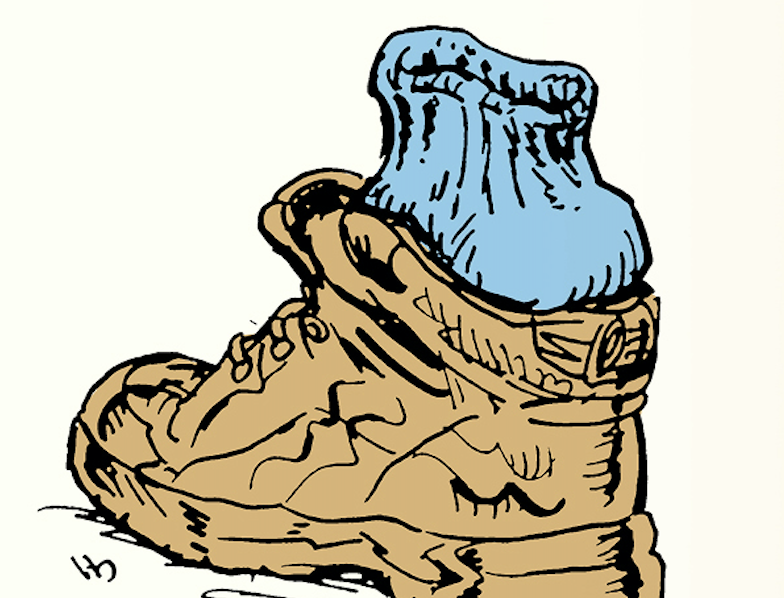
You’ve probably been to a fancy steakhouse where dry-aged steaks were on the menu. But if you’re like me, you likely passed on them because 1) dry-aged beef is a bit pricier, and 2) you didn’t exactly know what it meant for a steak to be “dry-aged” in the first place.
After today you’ll understand what happens to a steak when it’s dry-aged (and why an aged steak consequently costs more).
What Is Dry-Aged Beef?
The steak you typically eat is fresh. It’s red and full of moisture, which makes it nice and juicy.
A dry-aged steak is, as you surely guessed, aged before eating. You can find steaks that have been dry-aged from 7 to even up to 120 days. The most common timeframe for a steak to be dry-aged is 30 days. The meat doesn’t spoil during this time, because you age it in conditions that tightly control the levels of moisture and bacteria.
During the dry-aging process, moisture is drawn out of the meat. This causes the beef flavor to become even beefier and more flavorful. What’s more, the aging process causes the beef’s natural enzymes to break down the connective tissue in the meat, making it more tender. A crust of fungus which grows on the outside of the meat while it ages furthers this tenderization process, while adding a nice, corn-like flavor to your beef (you scrape this fungal crust off before cooking).
Dry-aging is basically a controlled decomposition of the meat, which sounds kind of gross, but results in a meat that is 1) more flavorful and 2) more tender.
The longer a piece of beef has been dry-aged, the more flavorful and tender it will be.
In his book Meat, celebrity butcher and former podcast guest Pat LaFrieda gives a nice explanation of how the flavor and tenderness of a steak changes depending on how long it’s been dry-aged, which I’ve condensed and summarized below:
7 days: Collagen has just begun to break down, but the steak won’t have the flavor or texture qualities that you look for in a dry-aged steak. Steak is not sold as “aged” at this stage. The meat is still fairly bright, but it will darken as it ages and dries.
21 days: The steak loses 10 percent of its weight in the first 3 weeks through evaporation. The water seeps out the front and the back of the meat, but the fat and bone on the sides of the steak make the sides waterproof. Because meat shrinks, the steak will become more concave as it ages. Although the fat doesn’t shrink, it does darken in the aging process.
30 days: This is the most commonly requested age in steaks. The steak has developed the flavor and texture qualities associated with dry-aged meat: it is very tender, with a flavor best described as a mix of buttered popcorn and rare roast beef. At this point, the steak has lost 15 percent of its total weight.
45 days: The steak has a little bit more funk than the one aged 30 days. You’ll start noticing white striations in the meat which is a mixture of mold and salt. The steak has lost only a fraction more weight, and the flavor of the fat changes before the meat does, so it’s important not to trim off all the fat before you cook it.
90 days: The white crust develops even more. This crust protects the meat the same way a rind does with cheese. The exterior crust is shaved off the meat before it is sold.
120 days: Only a handful of very high-end restaurants buy steak that has been aged this long. The steak has lost 35 percent of its original weight. A steak aged this long has a very funky flavor and is also very expensive, so it’s for someone who really appreciates an unusually intense beef flavor.
A few months ago, I decided to finally give dry-aged steak a try. While most grocery stores don’t sell it (due to the time and money cost involved; more on that below), Reasor’s, a local grocery chain here Tulsa, does. I bought a steak dry-aged for 30 days and a fresh steak to compare the two.

Fresh steak on the left; dry-aged on the right.
If you’re buying dry-aged steak from a grocery store, you’ll want to cook it that day. Letting it sit in your fridge for a while will put the dry-aging process off-kilter. By letting it sit, it’s aging some more, albeit in sub-optimal conditions.
The dry-aged steak definitely tasted beefier and had that slight buttered popcorn flavor that LaFrieda described. It was also much, much more tender than the fresh steak.
To me, the dry-aged steak didn’t taste better than the fresh steak; it was just . . . different. I probably wouldn’t go out of my way or fork over extra cash for a dry-aged steak at a restaurant. But that’s just me.
Why Is Dry-Aged Beef More Expensive?
You’re going to look to spend a few more dollars for a dry-aged version of a steak. Why?
Because the process of getting it to that state takes a long time and requires special temperature, humidity, and air-flow controlled refrigerators. The fridges also have to be sterile and not have any bacteria in them. If the temp or humidity is too high or too low, the meat will spoil or not dry-age correctly.
More TLC = More $$$
Can I Dry-Age Beef at Home?
Yes, but it takes a lot of work.
There are guides out there that show you how you can dry-age steak at home. Some guides claim you can do it in your regular fridge by putting the meat in layers of cheesecloth and letting it sit for a few days. But can you really?
I asked Pat LaFrieda about this during my podcast interview with him last year, and he said this:
“It’s almost impossible to do at home, unless you have a refrigerator that was dedicated to that, and one in which you could read the internal temperature of the refrigerator, and the humidity. The humidity’s got to be controlled. We have several systems that take the moisture out of the air. It’s very difficult to do at home . . . It’s not worth your time.”
The inconsistent temperature and humidity in your fridge from regularly opening and closing the door will upset the dry-aging process and cause unwanted and unhealthy bacterial growth. What’s more, the meat will likely soak up flavors inside of your fridge. You’ve probably eaten unwrapped butter that’s been sitting in your fridge. It tastes like . . . fridge. And it’s gross. Your meat will likely taste like that sitting in your fridge for several days or even weeks.
If you are going to dry-age meat at home, you’ll want to make a special fridge just for that process. Here’s a YouTube video of some guy’s version of that.
Unless you plan on making dry-aging beef your hobby (like home-brewing beer or roasting coffee beans), you’re better off just buying it from the store.
Listen to my podcast with Pat for a primer on all things meat:







